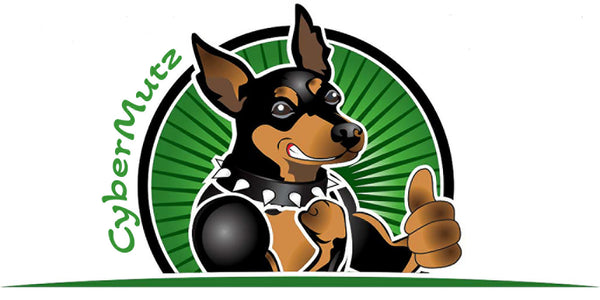
How to Dog-Proof Your Home Room by Room
Share
How to Dog-Proof Your Home Room by Room
Welcoming a dog into your home is a joyful experience, but it also comes with responsibility—especially when it comes to safety. Much like baby-proofing for a toddler, dog-proofing your home ensures your furry friend stays out of trouble while keeping your belongings intact. Whether you’re bringing home a new puppy or safeguarding your space for an adult dog, this guide walks you through dog-proofing your home room by room.
🛋️ Living Room
What to Watch For:
-
Wires and cables
-
Breakable items on low shelves
-
Toxic houseplants
-
Loose change or small objects
Dog-Proofing Tips:
-
Use cord concealers or cable boxes to hide electrical wires.
-
Move plants like philodendron, pothos, or lilies to higher shelves or remove them—many are toxic to dogs.
-
Secure bookshelves or end tables that a dog could knock over.
-
Keep remote controls, batteries, and small objects off coffee tables.
🍽️ Kitchen
What to Watch For:
-
Garbage cans
-
Cleaning products
-
Food (especially chocolate, grapes, onions, etc.)
-
Hot surfaces like stovetops
Dog-Proofing Tips:
-
Use dog-proof trash cans with locking lids or store them inside cabinets.
-
Store food in closed cabinets or high on shelves—don’t leave anything edible on counters.
-
Use childproof latches on lower cabinets, especially where cleaners or snacks are stored.
-
Never leave hot pans or stovetop burners unattended.
🚽 Bathroom
What to Watch For:
-
Medications
-
Toilet bowl water (often contains cleaning agents)
-
Soaps and shampoos
-
Razors and small items
Dog-Proofing Tips:
-
Keep the toilet lid closed—curious dogs may drink the water.
-
Store all medications, toothpaste, and cleaning supplies in a locked cabinet.
-
Place trash cans inside cabinets or use ones with secure lids.
-
Make sure razors and hygiene items are stored out of reach.
🛏️ Bedroom
What to Watch For:
-
Socks and underwear (dogs love chewing them!)
-
Jewelry and hair ties
-
Electrical cords (especially charging cables)
Dog-Proofing Tips:
-
Use drawer organizers or laundry hampers with lids to keep clothes out of reach.
-
Store small items like rings or rubber bands in closed drawers.
-
Block access under the bed if your dog likes to chew or hide things there.
-
Hide charger cords or use pet-safe cable wraps.
🧺 Laundry Room
What to Watch For:
-
Detergents and dryer sheets
-
Small items like buttons, coins, or dryer lint
-
Sharp tools or ironing equipment
Dog-Proofing Tips:
-
Keep all cleaning products high up or locked away.
-
Always close the washer and dryer doors when not in use.
-
Use a pet gate if your dog tends to explore this space unsupervised.
🧒 Kids’ Room or Play Area
What to Watch For:
-
Small toys or stuffed animals with plastic eyes or buttons
-
Art supplies like glue, markers, or paint
-
Snacks or food left out
Dog-Proofing Tips:
-
Teach kids to keep their toys off the floor and food put away.
-
Store art supplies in bins with lids.
-
Consider a dog gate or keeping the door closed if your dog tends to get into trouble.
🌿 Outdoor Areas (Yard, Patio, Balcony)
What to Watch For:
-
Gaps in fencing
-
Toxic plants and mulch
-
Tools or sharp garden items
Dog-Proofing Tips:
-
Check for loose boards or spaces in fences—dogs are escape artists.
-
Avoid cocoa mulch and poisonous plants like oleander or azaleas.
-
Store all tools and lawn products in a secure shed or cabinet.
-
Provide shade and clean water if your dog spends time outside.
🛠 Bonus: General Dog-Proofing Must-Haves
-
Baby gates to limit access to certain rooms
-
Non-slip mats on hardwood or tile floors
-
Crates or pens for when you’re not home
-
Chew toys to redirect destructive chewing behavior
-
Surveillance cams for monitoring while you’re away
Final Thoughts
Dog-proofing your home isn’t a one-time task—it’s an ongoing process of observation and adaptation. Dogs are naturally curious and often get into things we’d never expect. Taking a proactive, room-by-room approach keeps your pup safe, your home damage-free, and your peace of mind intact.
Whether you’ve got a mischievous puppy or a mellow senior, these tips will help create a secure and dog-friendly environment that both of you can enjoy.
